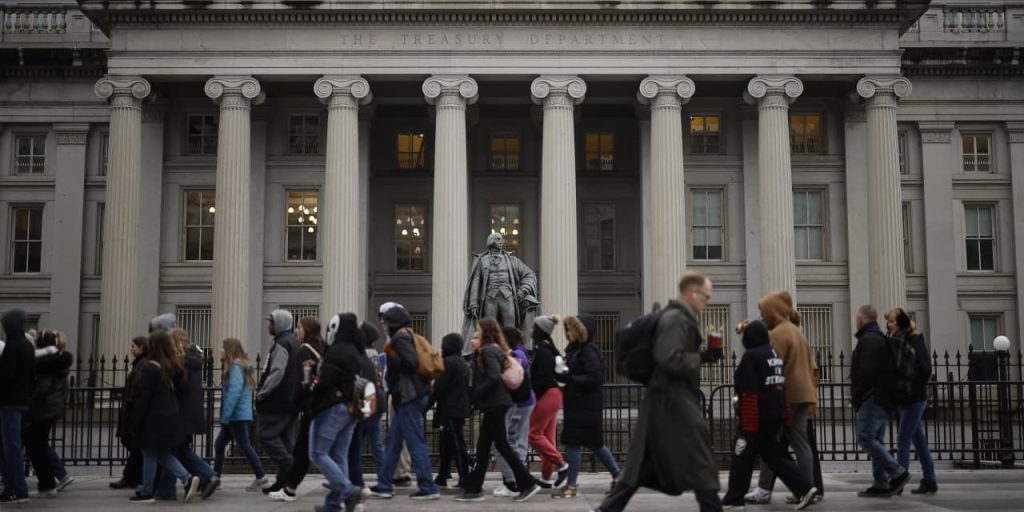The Treasury’s auction of 30-year bonds on Thursday went about as badly as it could, indicating investors are reluctant to own long-dated government securities.
At the auction of government debt that matures in 30 years, investors were awarded 4.769% in yield, 0.051 percentage point higher than the yield in pre-auction trading. The difference between the two yields—called a tail—indicated a weak auction where the U.S. government had to entice investors with a premium over the market to buy their debt.
Primary dealers, who buy up supply not taken by investors, had to accept 24.7% of the debt on offer, more than double the 12% average for the past year.
“Today’s 30 yr auction was outright bad,” Peter Boockvar, chief investment officer at Bleakley Financial Group, said in a research note.
The 30-year auction was part of the government’s $112 billion debt sale and followed an uneventful 10-year auction on Wednesday.
The 30-year yield ended Thursday at 4.777%, more than 0.12 percentage point higher than at Wednesday’s close. The reaction makes sense. When demand is weak, yields typically move higher. It is the inverse when demand is strong.
Stocks didn’t like the auction either. The
S&P 500
snapped an eight-session winning streak, dropping 0.8% on Thursday while the
Dow Jones Industrial Average
ended 0.7% lower. The
Nasdaq Composite
fell 0.9%. All three indexes had wavered between gains and losses before the sale.
Market participants don’t usually focus on Treasury auctions, given that the government routinely puts billions of dollars of debt up for sale. But investors started zeroing in late this year as questions surfaced about demand for Treasuries. The national budget deficit grew to $1.7 trillion in fiscal 2023, the 12 months through September, making it about $300 billion more than the year before, according to the Congressional Budget Review, an independent research body.
Year to date through October, Treasury debt issuance was 32% higher than a year earlier, according to the Securities Industry and Financial Markets Association, or Sifma.
If government revenue doesn’t rise, higher spending would lead to a further increase in borrowing. Investors are concerned about who will buy the debt.
Thursday’s 30-year auction may have amplified the concerns, but there are a number of factors at play. The weak sale could be partly due to investors’ reluctance to buy long-term debt when rates are attractive for shorter maturities. On Thursday, the 2-year note yielded 5.022%.
In addition, the Federal Reserve’s quantitative-tightening campaign has meant the central bank is no longer buying Treasury debt, as it did when it was trying to prop up the economy during the pandemic. Instead, the bank has been letting the bonds it holds mature without using the proceeds to buy newer debt. The result is that the market has one fewer big buyer while the supply is high.
Also, November has tended to be an unfavorable month for auctions of 30-year debt, according to Ben Jeffery, a strategist at BMO Capital Markets. He said in a research note that only three of the last 14 November auctions of 30-year debt have been strong. Since the beginning of 2018, just 26% of new 30-year debt issuances have been strong, he added.
Write to Karishma Vanjani at [email protected].
Read the full article here
